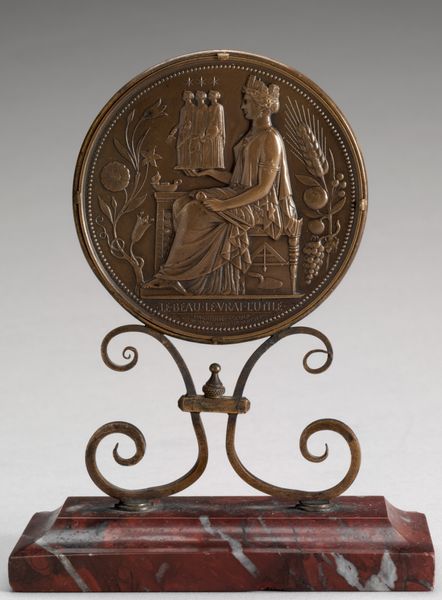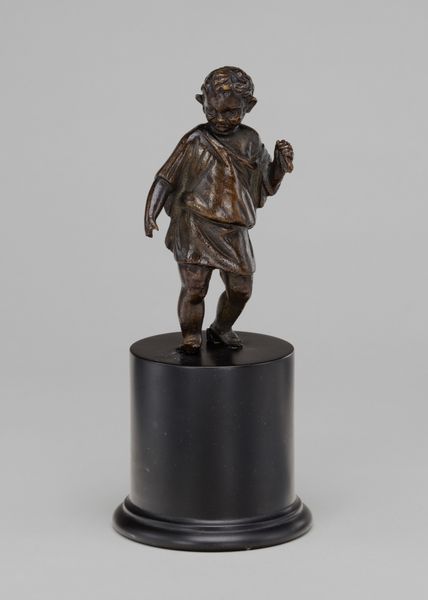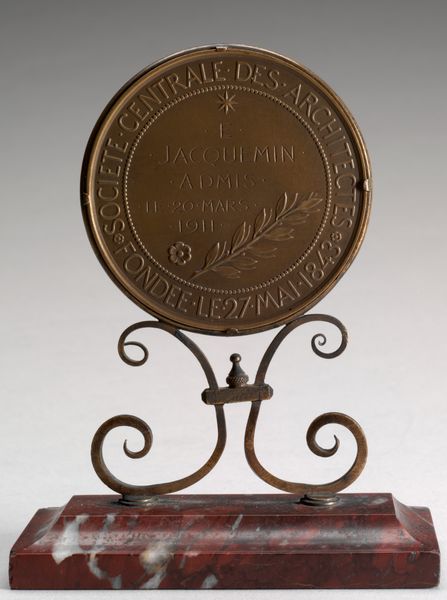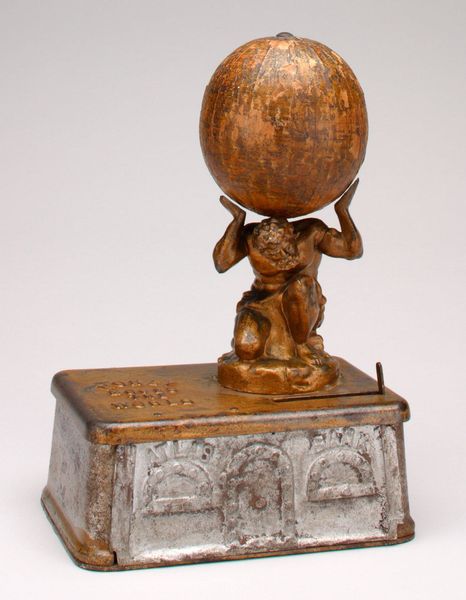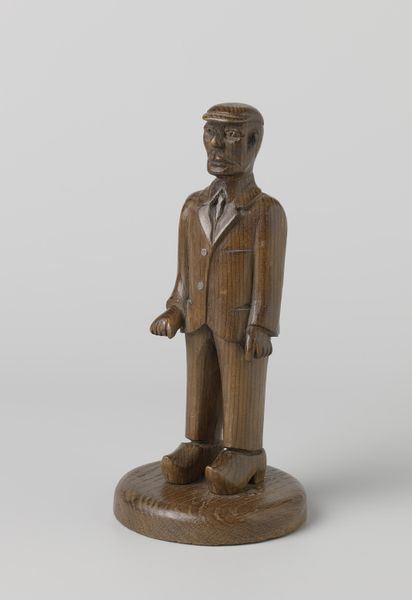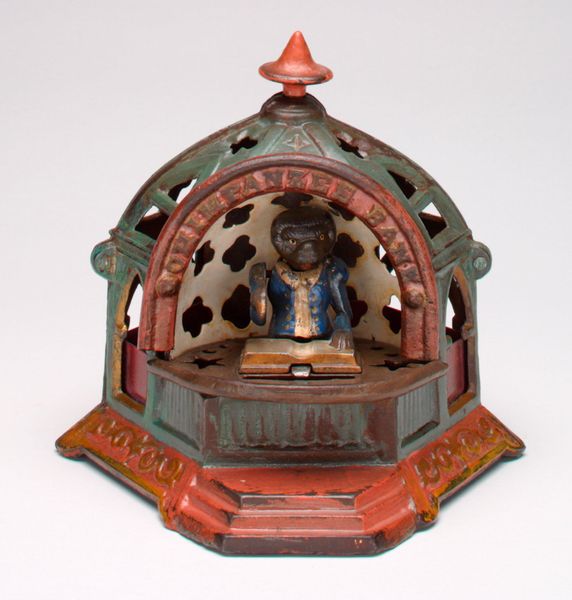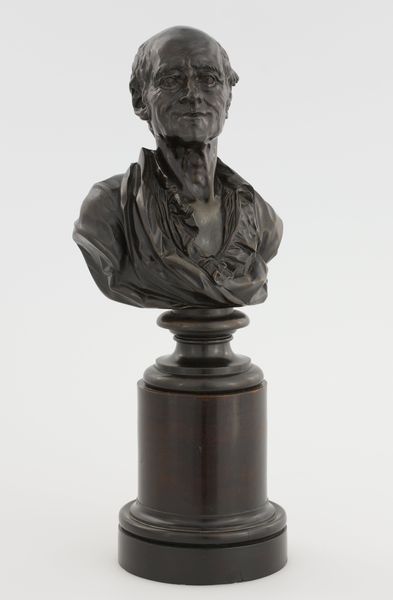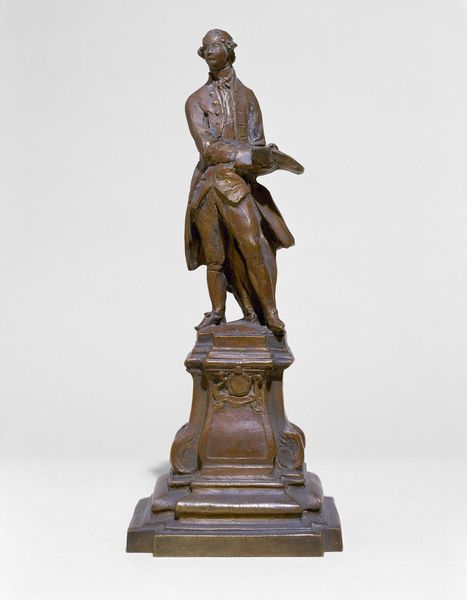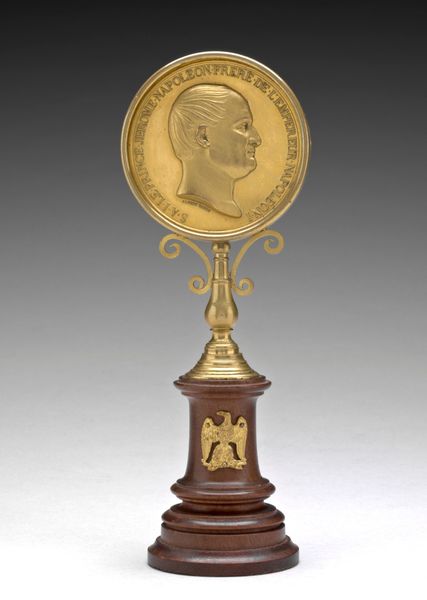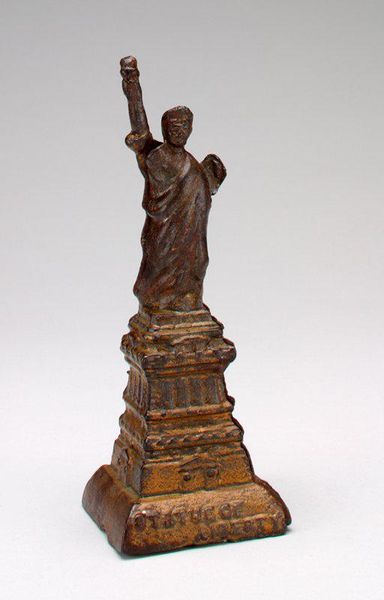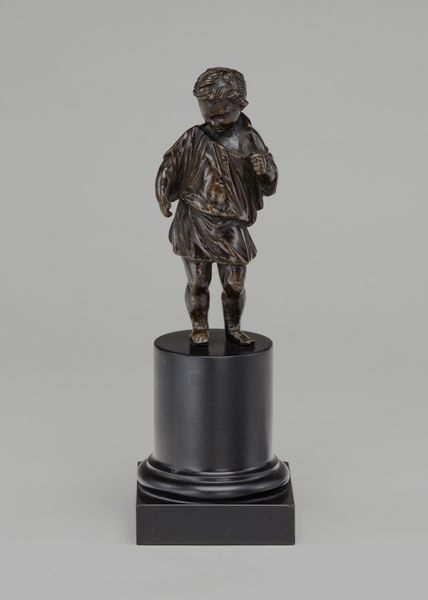
assemblage, metal, found-object, sculpture
#
assemblage
#
metal
#
sculpture
#
found-object
#
figuration
#
sculpture
#
decorative-art
Dimensions: 8 1/16 x 7 x 3 13/16 in. (20.48 x 17.78 x 9.68 cm)
Copyright: Public Domain
Editor: This is William C. Bull’s *Magician*, from around 1901. It's an assemblage, mostly of metal and found objects. I find the figure a little unsettling—like a mechanical man trapped in a perpetual performance. What cultural symbols do you see in it? Curator: That sense of unease is potent. It certainly plays on anxieties around automation that were emerging at the turn of the century. Look closer – the magician isn't just about stagecraft; he represents the blurring lines between reality and illusion. This relates to earlier archetypes, Hermes the trickster for example. What might the offering of the coin itself signify? Editor: I guess putting money in a magic box could be symbolic of faith and blind trust? Or the allure of easy wealth through illusion? Curator: Precisely! This ties into the era's fascination with spiritualism and technological marvels – both promising unseen forces. The decorative, almost theatrical presentation with "Magician Bank" emblazoned at the front, evokes curiosity and skepticism simultaneously. How does it make you think of earlier depictions of stage performers? Editor: I am thinking of tarot imagery - the "Magician" card. Perhaps this artwork wants to elevate the occupation to the spiritual level. Curator: Good observation! Early decks carried associations with charlatans but through careful use of symbols and iconography, magicians moved towards artistry and authority. Editor: So, what starts out as an intriguing sculpture reveals complex layers of faith, entertainment and maybe manipulation through cultural memory? Curator: Indeed. An innocuous-seeming object turns into a fascinating repository of cultural anxieties and evolving symbolisms.
Comments
No comments
Be the first to comment and join the conversation on the ultimate creative platform.
